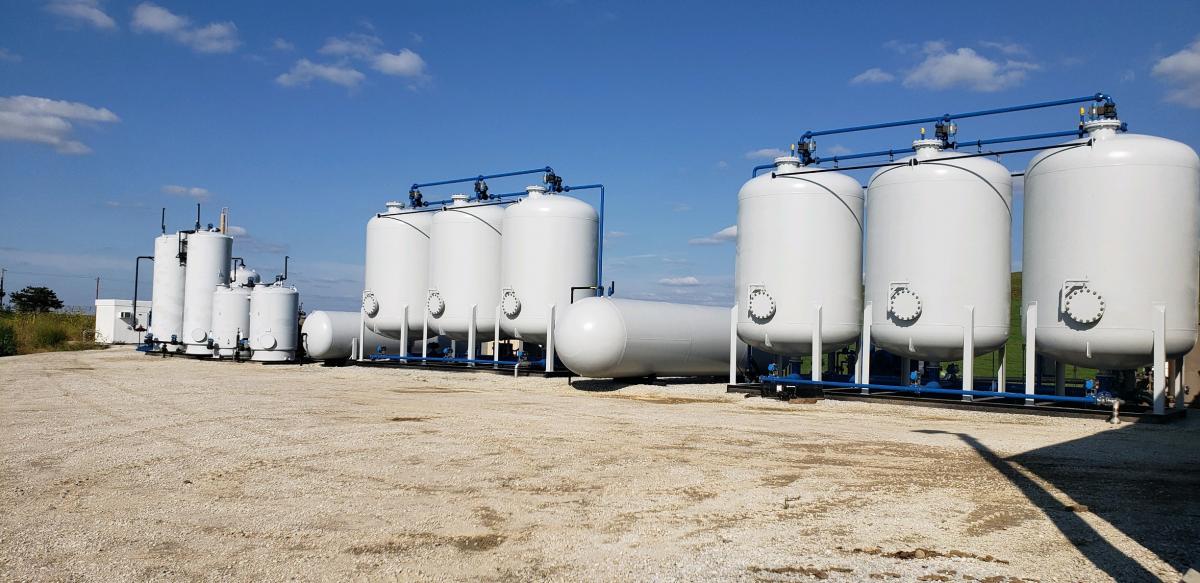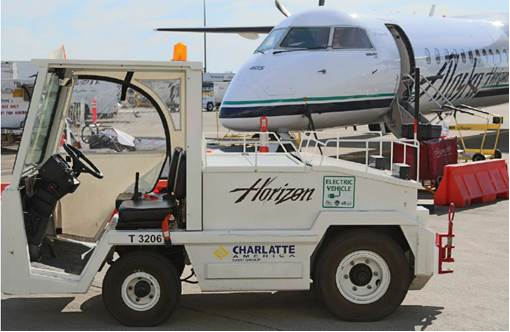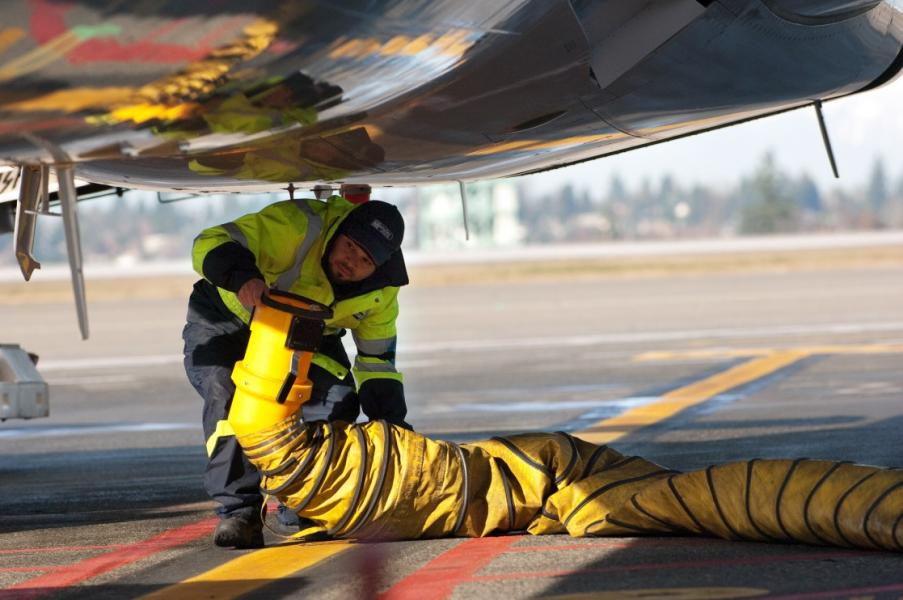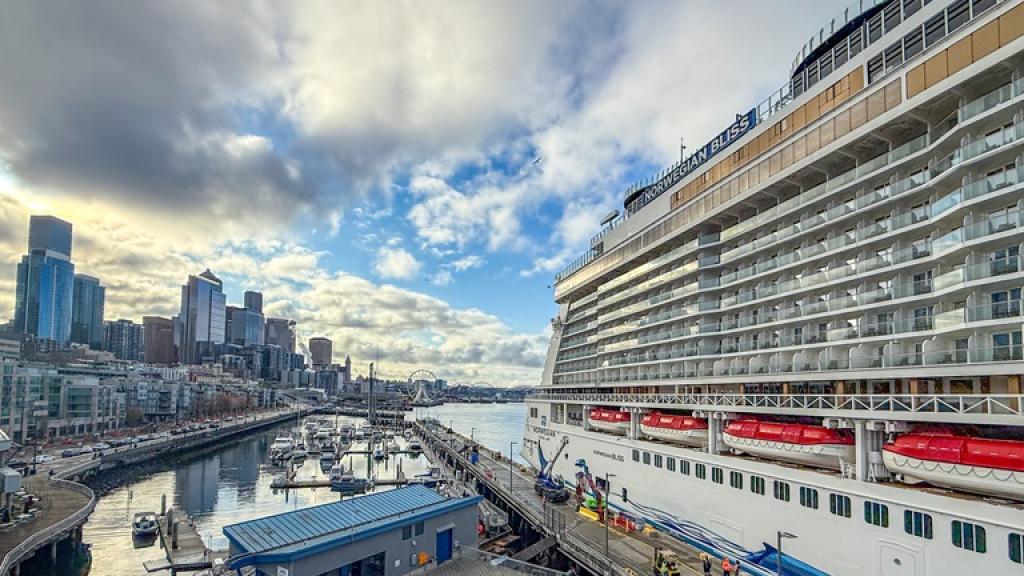Reducing Emissions
SEA Airport collaborates with our tenant airlines, service providers, and our community to reduce emissions. While a majority of pollution-causing emissions occur from sources not under our control, through these partnerships and the environmental goals of our organization, we can move people and goods more efficiently while improving our region's air quality and strengthening the businesses that operate at SEA Airport.
Airport Renews Carbon Certification
SEA was the first airport in North America to be certified for reducing carbon through an independent third-party verification program carbon known as Airport Carbon Accreditation (ACA).
In total there are four levels of ACA certification. SEA achieved Level 2 (Reduction) in 2014, and reached Level 3 (Optimization) in 2016. The fourth level (Level 3+) requires purchases of carbon offsets for the airport’s own emissions. Instead, SEA will maintain Level 3 and continue to seek its carbon reductions through energy efficiency and purchasing renewable energy and fuels.
Programs that helped SEA achieve Level 3 include electric charging stations for ground service equipment, pre-heated and cooled air service for parked aircraft, off-aircraft recycling, compressed natural gas buses and energy-efficient taxis, and charging stations for electric vehicles parking in the airport garage.
Renewable Natural Gas

SEA is the first airport in the country to purchase thermal renewable natural gas (RNG), a low-carbon natural gas alternative produced from landfill waste, to heat the airport terminal and power our bus fleet. This decision to switch from higher carbon fossil fuel to renewable waste-derived fuel will enable the Port to reduce its carbon emissions by 50 percent in 2021, a goal that was initially targeted for 2030.
Benefits of RNG: RNG produces no new carbon emissions because it replaces fossil fuels and recycles existing carbon in the atmosphere. Natural gas accounts for 75 percent of the Port’s annual climate-warming greenhouse gas emissions. This 10-year contract will result in the reduction of approximately 11,000 tons of emissions the Port directly produces from its own operations (scope 1) and those from the electricity it purchases (scope 2). Using RNG at SEA Airport in the next decade will remove the emissions equivalent of:
- Heating 40,000 Seattle homes
- Taking 24,000 passenger vehicles off the road
Zero-Emission Fleet Vehicles and Equipment
The Port is using a combination of electrification and renewable fuels to reduce emissions from Port-owned vehicles at SEA Airport. The bus fleets that serve SEA Airport’s rental car facility and employee parking operations are powered by renewable natural gas, and the Port purchases renewable diesel for all the heavy-duty diesel-powered equipment in the fleet, such as snowplows and sweepers. In 2024, SEA Airport completed a planning study to evaluate the future electrical capacity needs to transition the fleet to electric vehicles, paving the way for installing short-term charging options and planning for future needs.
Electric Ground Support Equipment 
SEA Airport has installed nearly 300 electric ground support equipment (eGSE) charging locations throughout the passenger terminal ramps, to have them available at every gate by 2021 (561 in total). Each site or chargepoint typically provides charging for one piece of eGSE.
Benefits of eGSE: SEA's eGSE charging stations allow airlines to use electrically-powered GSE rather than petroleum-fueled GSE. By using these types of electric vehicles, this project (when complete) will reduce:
- Nearly 1 million gallons of petroleum per year
- Approximately $2.8M in fuel expenditures per year
- 10,000 metric tons of GHGs per year, the pollution that causes global warming
Greener Transportation Options
SEA Airport has partnered with many of our ground transportation providers to offer greener choices such as high MPG taxis and rideshare options, or alternative fuel shuttles and door-to-door vans. These include initiatives such as:
- Partnered with Clean Energy to build the state's first large compressed natural gas (CNG) fueling station open to the public
- In response to airport contracts, taxis picking up at SEA must be high MPG or alternative fueled
- In response to airport contracts, rideshare services such as Uber and Lyft must meet the same environmental performance standards of the taxi fleet but may do so through several options including ride pooling and deadhead reduction.
- Many of our shuttle and door-to-door van services use alternative fuels like propane and natural gas and use high mileage vans in their fleets
Pre-Conditioned Air and Ground Power for Aircraft
Seattle-Tacoma International Airport has installed Pre-Conditioned Air or "PC Air" and ground power at each of our gates to reduce energy costs for airlines, improve air quality, and increase energy efficiency throughout the airport. PC Air provides cooled and heated air to an airplane cabin while parked at SEA gates, while ground power supplies other electrical needs in the cabin. Pre-conditioned air allows the pilot to turn off the airplane's auxiliary engines that would typically provide air and electricity to the cabin, thereby reducing fuel and air emissions.
Benefits of PC Air: PC Air provides both environmental and financial benefits to our airline's partners, our passengers, and our surrounding communities. Each year, PC Air reduces:
- 5 million gallons of fossil fuel use
- $15 M in fuel expenditures by the airlines
- 73 tons of nitrogen oxides (NOx), a nationally regulated air pollutant
- 40,000 metric tons of greenhouse gases












